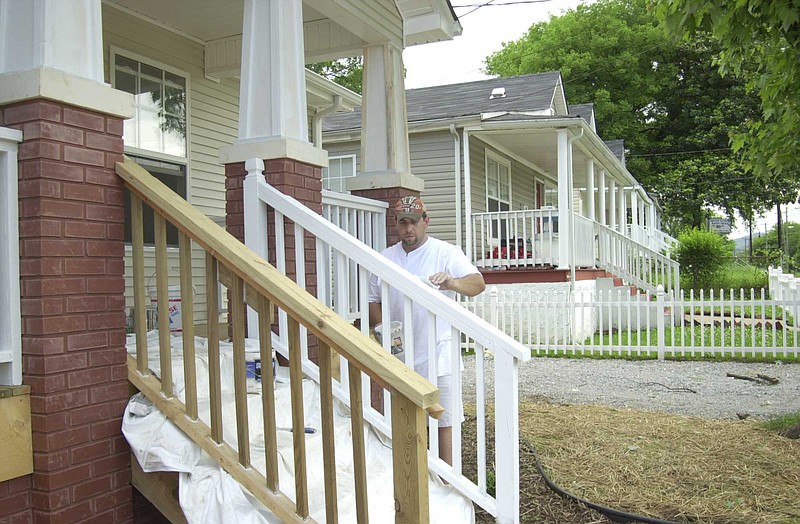A New York Times article, which ran in the Times Free Press Sunday, was headlined "Mostly black community becoming whiter."
It might, instead, have been titled "Life is happening."
The story behind the headline was that in a progressive Southern capitol city - Raleigh, North Carolina - white residents were moving into neighborhoods that previously were inhabited by all-black residents.
"Here, and in the center of cities across the United States, a kind of demographic change has been accelerating," the story read. "White residents are increasingly moving into nonwhite neighborhoods, largely African American ones."
We're not sure if The New York Times doesn't get out much, or pays much attention to life beyond the liberal Northeast, but this movement of people has been going on in Chattanooga for three decades or more and likely as long in most other cities between the Atlantic and Pacific coasts.
The story pointed out correctly that between 1980 and 2000, more than 98% of the change in census tract diversity came about because of blacks moving into previously all-white neighborhoods.
Fifteen to 20 years before that, many black families did not have that opportunity because it was forbidden by law or because they were redlined by banks. Many also couldn't afford to leave where they were, be it in public housing or in a tiny house - often rented - in a compact, poor neighborhood.
When laws changed and banks subsequently relaxed their policies, blacks who could afford to do so began to move to the suburbs. When that happened, white flight opened even more room there.
But within a few years of the majority of white flight, at least in Chattanooga and likely in most cities, reverse white flight, or "white return," The New York Times story called it, began to occur.
In Chattanooga, it started slowly in Highland Park, St. Elmo and North Chattanooga, neighborhoods that began as white suburbs but gradually became thoroughly mixed as the city's downtown streets were rolled up at 5 p.m.
But younger generations didn't want a city that slept during the evening, so thought, energy and money were spent to transform downtown into an alive and thriving place.
Even as that began, some white Chattanoogans saw the possibilities and were attracted by the short drives downtown from the adjoining neighborhoods, by the smaller real estate prices and by living in a more diverse neighborhood, and started to renovate houses in the mixed suburbs.
In the 19 years since the era the Times story referred to, when the diversity was largely black-to-white neighborhoods, that trend has only continued.
In Chattanooga, for instance, it picked up in the Southside and East Main Street neighborhoods, where short hops downtown and access to nightlife enticed more whites to move to formerly all-black enclaves.
Similarly, the Times story anecdotally refers to white Raleigh residents who "wanted to be in downtown," didn't want a "neighborhood where all the kids look exactly the same as my kids" and wanted to buy in an affordable neighborhood where if they didn't, "somebody else was definitely going to buy that home."
It would be naive to pretend, though, that the negative aspects of gentrification didn't happen in Chattanooga, or probably in Raleigh, or in any city where the trend is occurring.
In situations where often white landowners see an opportunity for a better return on their investment than in collecting several hundred dollars in monthly rental on a tumbledown house, they simply end the rental agreement, and sell the property to a developer who puts a new house on it, or they develop it themselves. The renters, often black, are forced to find another home, sometimes hurriedly and probably not nearly as cheaply as they were paying before.
No laws are broken, no land owners should be faulted for wanting to capitalize on their holdings, the neighborhood is improved and the county gets more in taxes on the property. Win, win, win, win.
The only one who didn't win is the former renter, who either couldn't or didn't buy the property, or move, if they had an opportunity earlier. And, often old or infirm or both, their plight even might get worse and the chance to improve their situation is gone with the wind.
The answer for future generations, of course, is to value education, to obtain a degree, certified skill or trade, and to own the place where you live. If you have those, you have choices.
We hope in time a saga on whites moving into formerly black neighborhoods won't be viewed as a story - just life. And wouldn't it be even better if that also meant in every neighborhood there was no need to talk about quality of schools, racial tension, gang violence and, as Dr. Martin Luther King Jr. said, "the most segregated hour of Christian America [being] 11 o'clock on a Sunday morning."
